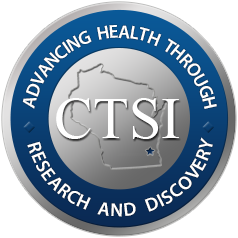Dystrophin genotype-cardiac phenotype correlations in Duchenne and Becker muscular dystrophies using cardiac magnetic resonance imaging. Am J Cardiol 2015 Apr 01;115(7):967-71
Date
02/24/2015Pubmed ID
25702278Pubmed Central ID
PMC5568575DOI
10.1016/j.amjcard.2015.01.030Scopus ID
2-s2.0-85027944190 (requires institutional sign-in at Scopus site) 33 CitationsAbstract
Duchenne and Becker muscular dystrophies are caused by mutations in dystrophin. Cardiac manifestations vary broadly, making prognosis difficult. Current dystrophin genotype-cardiac phenotype correlations are limited. For skeletal muscle, the reading-frame rule suggests in-frame mutations tend to yield milder phenotypes. We performed dystrophin genotype-cardiac phenotype correlations using a protein-effect model and cardiac magnetic resonance imaging. A translational model was applied to patient-specific deletion, indel, and nonsense mutations to predict exons and protein domains present within truncated dystrophin protein. Patients were dichotomized into predicted present and predicted absent groups for exons and protein domains of interest. Development of myocardial fibrosis (represented by late gadolinium enhancement [LGE]) and depressed left ventricular ejection fraction (LVEF) were compared. Patients (n = 274) with predicted present cysteine-rich domain (CRD), C-terminal domain (CTD), and both the N-terminal actin-binding and cysteine-rich domains (ABD1 + CRD) had a decreased risk of LGE and trended toward greater freedom from LGE. Patients with predicted present CTD (exactly the same as those with in-frame mutations) and ABD1 + CRD trended toward decreased risk of and greater freedom from depressed LVEF. In conclusion, genotypes previously implicated in altering the dystrophinopathic cardiac phenotype were not significantly related to LGE and depressed LVEF. Patients with predicted present CRD, CTD/in-frame mutations, and ABD1 + CRD trended toward milder cardiac phenotypes, suggesting that the reading-frame rule may be applicable to the cardiac phenotype. Genotype-phenotype correlations may help predict the cardiac phenotype for dystrophinopathic patients and guide future therapies.
Author List
Tandon A, Jefferies JL, Villa CR, Hor KN, Wong BL, Ware SM, Gao Z, Towbin JA, Mazur W, Fleck RJ, Sticka JJ, Benson DW, Taylor MDMESH terms used to index this publication - Major topics in bold
AdolescentAdult
Cardiomyopathies
Child
Child, Preschool
DNA
DNA Mutational Analysis
Dystrophin
Exons
Female
Humans
Magnetic Resonance Imaging
Magnetic Resonance Imaging, Cine
Male
Muscle, Skeletal
Muscular Dystrophy, Duchenne
Mutation
Sequence Deletion
Young Adult









